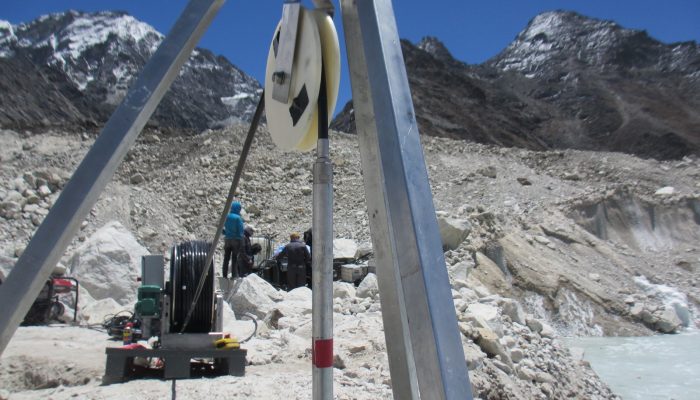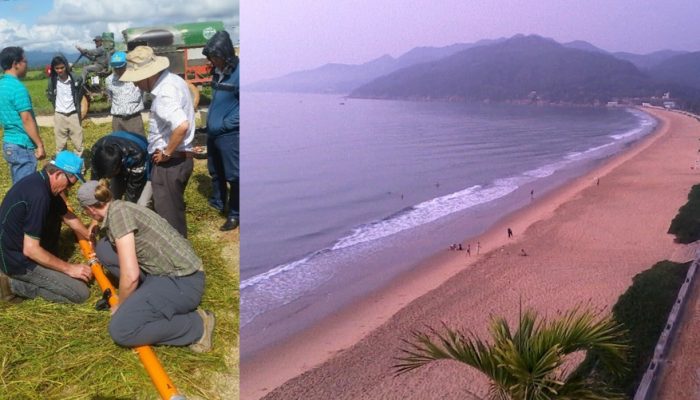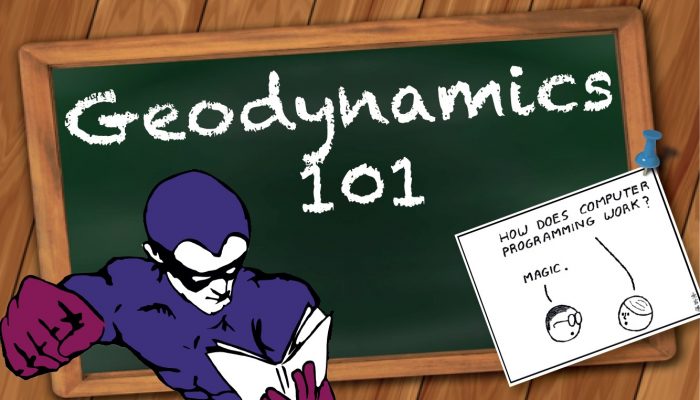Applied mathematics is often seen as an obscure field, which the general public has no hope of ever understanding. In the context of climate science, this is far from the truth. In fact, many mathematical concepts and ideas applied to the study of the climate system stem from intuitive arguments. While their implementation can be very complex, understanding the basic ideas behind them does not req ...[Read More]
If you didn't find what you was looking for try searching again.
GeoLog
GeoPolicy: How can geoscientists make the most of the Horizon 2020 programme?
As a geoscientist, I’m sure that you have heard of Horizon 2020, an EU programme that is allocating almost €80 billion to research and innovation over 7 years (from 2014 to 2020). This money is distributed throughout various scientific divisions and provides a plethora of opportunities for scientists, not only within the EU but also throughout the world. Unfortunately, the magnitude of the Horizon ...[Read More]
Cryospheric Sciences
Image of the Week – Drilling into a Himalayan glacier
How water travels through and beneath the interior of debris-covered glaciers is poorly understood, partly because it can be difficult to access these glaciers at all, never mind explore their interiors. In this Image of the Week, find out how these aspects can be investigated by drilling holes all the way through the ice… Hydrological features of debris-covered glaciers Debris-covered glaciers ca ...[Read More]
Earth and Space Science Informatics
PICO in the picture
Like everyone else, in the beginning I was skeptical of the newly introduced presentation format at the EGU – the PICO sessions. PICO stands for Presenting Interactive Content. Half talk, half poster – this is a new design that demands a completely new and unfamiliar preparation of the presenter, and yes admittedly at first this meant additional work. However, already during the creation of my fir ...[Read More]
GeoLog
Shape the EGU 2018 scientific programme: Call-for-sessions is open!
Do you enjoy the EGU’s annual General Assembly but wish you could play a more active role in shaping the scientific programme? Now is your chance! From today, until 8 Sep 2017, you can suggest: Sessions (with conveners and description), or; Modifications to the existing skeleton programme sessions NEW! Suggestions for Short courses (SC) will also take place during this period From now until 18 Jan ...[Read More]
Geodynamics
Karaoke, geodynamics, and a bit of history
Let me just talk to you about what I have been doing with my free time recently: I discovered a feature from Google Books named Ngram viewer which allows you to make graphs that show how words or phrases have occurred in a selection of books (e.g., English) over the selected years. I have of course been playing with this thing! You can imagine how exciting my weekends are. In all seriousness, thou ...[Read More]
Solar-Terrestrial Sciences
Capturing a Whole Total Eclipse of the Sun: Megamovie
by Hugh S Hudson (U. of Glasgow and UC Berkeley) Normally solar eclipses give an observer only a fleeting moment (minutes at most) to enjoy the solar corona. We aim to amplify that considerably in the August 21 eclipse across North America. The plan is simple: Megamovie will capture everybody’s images, especially those from a group of 1,000 photographc volunteers, and compile them into an op ...[Read More]
WaterUnderground
Humanitarian groundwater projects; notes on motivations from the academic world
Post by Margaret Shanafield, ARC DECRA Senior Hydrogeology/Hydrology Researcher at Flinders University, in Australia. You can follow Margaret on Twitter at @shanagland. ___________________________________________________________ What led me down the slippery slope into a career in hydrology and then hydrogeology, was a desire to combine my love of traveling with a desire to have a deeper relations ...[Read More]
Cryospheric Sciences
Image of the Week – Fifty shades of snow
When I think of snow, I tend to either think about the bright white ski slopes in the mountains or the large white areas in the Arctic. However, natural phenomena can lead to colorful snow. Our Image of the Week shows snow can be green! Snow can also turn orange, pinkish, grey and even yellow… But where do these different shades of snow come from? White The most common color of snow is white (see ...[Read More]
Geodynamics
Don’t be a hero – unless you have to
The Geodynamics 101 series serves to show the diversity of topics and methods in the geodynamics community in an understandable manner for every geodynamicist. PhD’s, postdocs, full professors, and everyone in between can introduce their field of expertise in a lighthearted, entertaining manner and touch on some of the outstanding questions and problems related to their method of choice. Thi ...[Read More]








